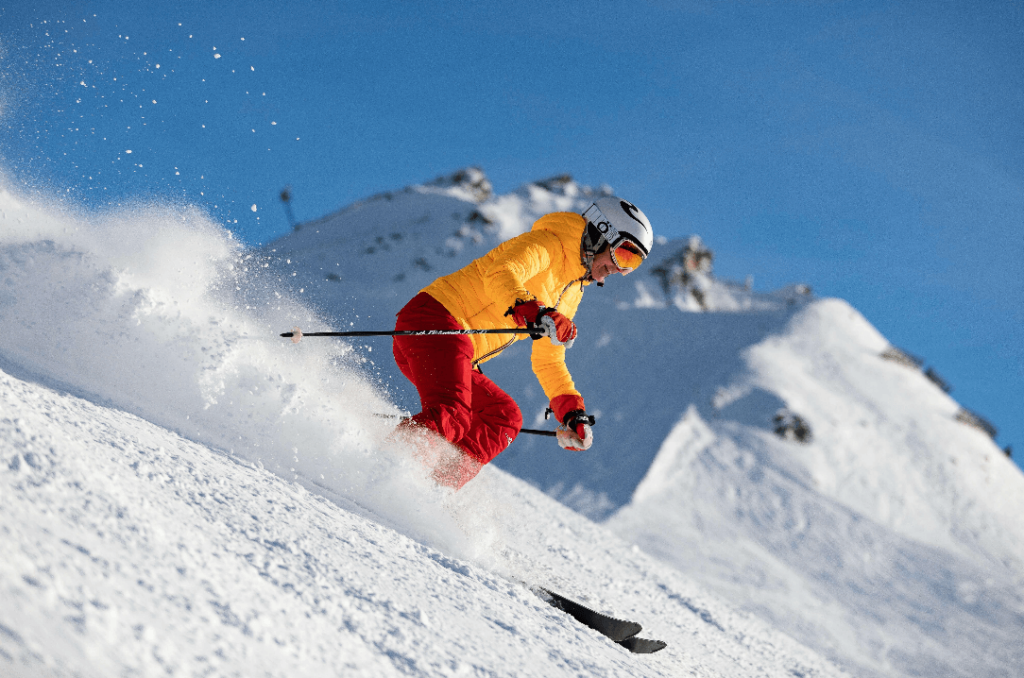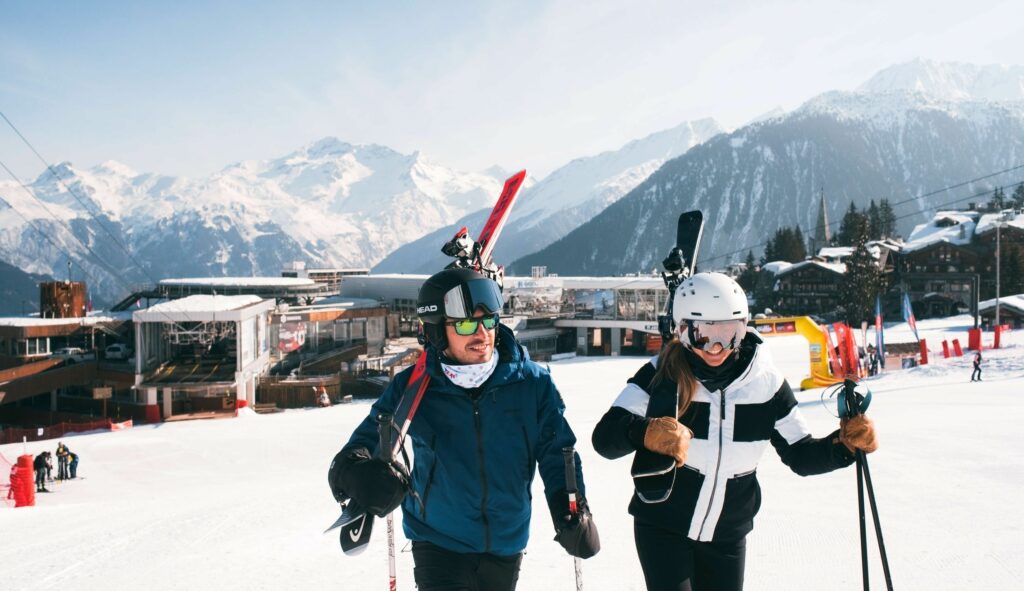Finding the right ski goggles for your face shape and size is crucial for both style and comfort on the slopes. Not only do ski goggles protect your eyes from the harsh elements, but they also enhance your overall skiing experience by improving visibility and reducing glare. In this comprehensive guide, we will explore the different face shapes and sizes and provide expert tips on selecting the perfect ski goggles for each one.
Understanding Face Shapes and Sizes

Oval Face Shape:
An oval face shape is characterized by balanced proportions and softly rounded contours.
Ski goggles with a medium to large frame size are ideal for oval faces as they complement the natural symmetry of the face. Styles with a slight wrap-around design can further enhance the face’s oval shape.
When selecting ski goggles for an oval face shape, it is essential to ensure a comfortable fit by considering the width and height of the goggles. Opt for goggles that cover the eyes adequately without causing pressure points on the temples or nose bridge.
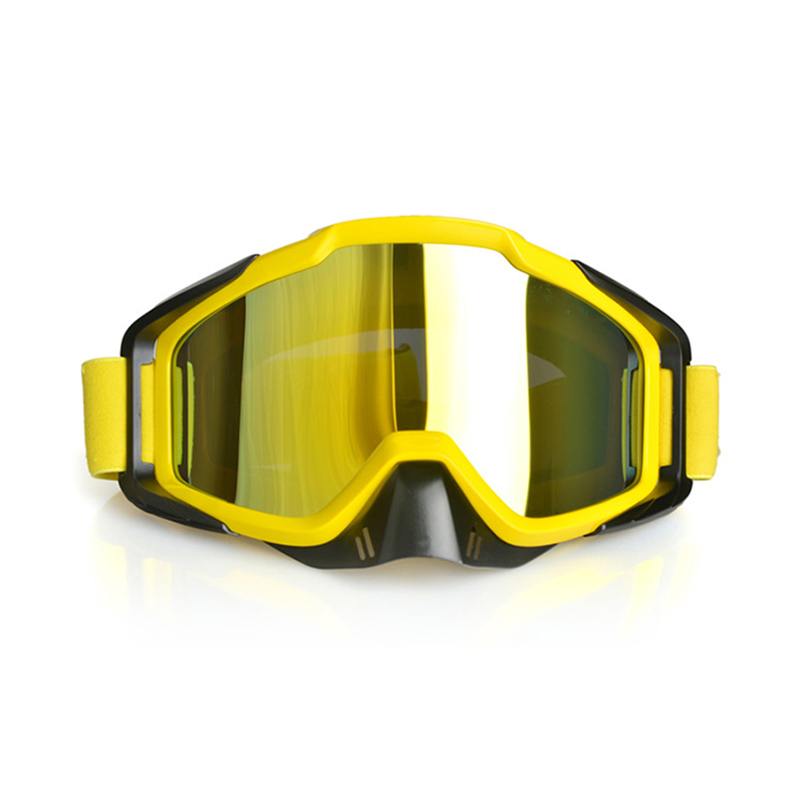
Round Face Shape:
A round face shape features fuller cheeks and a rounded chin.
Ski goggles with angular, rectangular, or oversized frames are great choices for individuals with round faces as they add visual structure and length to the face. Opt for styles with higher cheekbones to draw attention upward.
Sizing considerations for round faces include selecting goggles with a wide frame width to create balance and avoid feeling cramped.
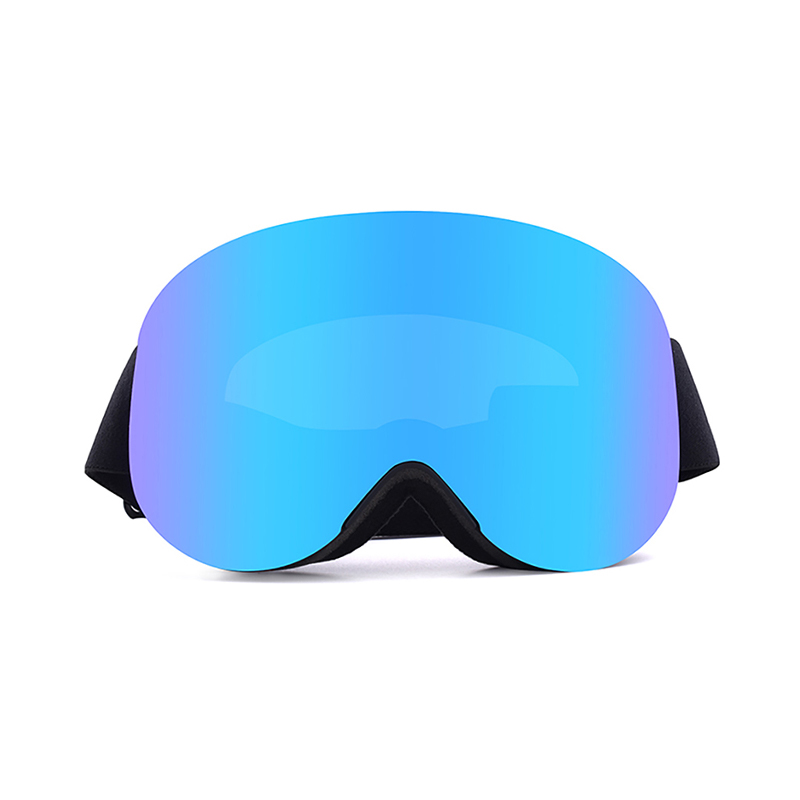
Square Face Shape:
A square face shape is characterized by a strong jawline and equally proportioned forehead and cheekbones.
Ski goggles with rounded or oval frames can help soften the angles of a square face shape. Styles with thinner temples and frames can add balance and create a more harmonious look.
When choosing ski goggles for a square face shape, it is essential to find the correct width and coverage to maintain proportions and avoid gaps between the goggles and the face.
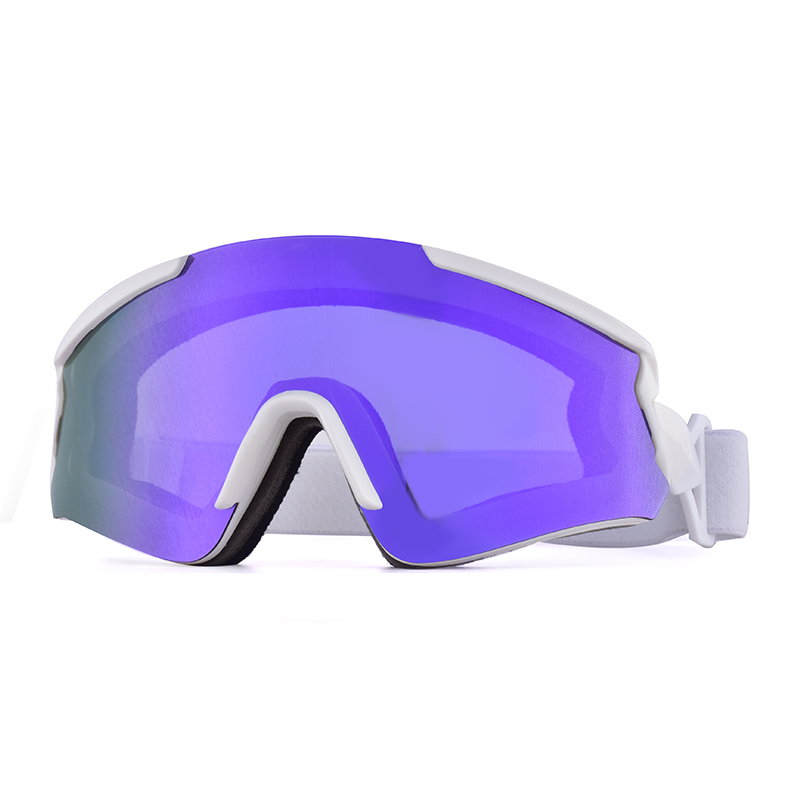
Heart Face Shape:
A heart-shaped face features a broader forehead and narrower jawline.
Ski goggles with cat-eye or aviator-inspired designs can flatter a heart-shaped face by bringing attention downward and balancing the face’s proportions. Opt for goggles with a wider upper frame and narrower lower frame to complement the face shape.
Adjust ski goggle straps to ensure a snug fit without causing discomfort or pressure on the temples or nose bridge.
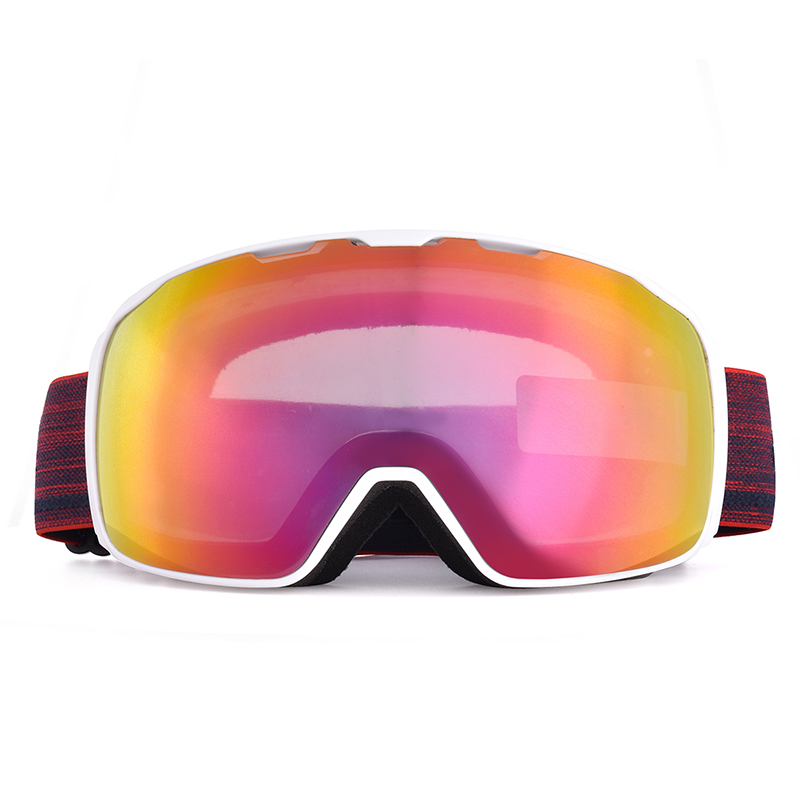
Oblong Face Shape:
An oblong face shape is characterized by long, narrow proportions with a straight jawline.
Ski goggles with a wide frame design and a horizontal emphasis can help complement the oblong face shape. Look for styles with a wrap-around or oversized shape that adds width to the face.
Consider sizing tips such as selecting goggles that cover the eyes fully without excessively pressing on the nose bridge to prevent discomfort and pressure points.

Diamond Face Shape:
A diamond face shape features high cheekbones, a narrow forehead, and a tapered chin.
Ski goggles with oval or cat-eye frames can help balance the angles of a diamond-shaped face. Look for styles that are wider at the top and narrower at the bottom to harmonize the face shape.
Consider selecting ski goggles with the right lens shape and size to ensure proper coverage and avoid any distortion of peripheral vision.
Choosing Ski Goggles Based on Face Size
Small Face Size:
A small face is characterized by delicate facial features and a narrower overall width.
Ski goggles with a compact frame design and a smaller lens size are suited for small face sizes. Look for goggles with a low-profile fit and slim temples to prevent the goggles from overpowering the face.
Adjust the goggles’ straps for a secure and comfortable fit without causing any pressure points or gaps.
Medium Face Size:
A medium-sized face features balanced proportions with a moderate width.
Ski goggles with a versatile frame size and medium lens size are suitable for medium face sizes. Look for styles that offer a good balance between coverage and style.
Proper ventilation is crucial for medium face sizes to prevent fogging. Look for goggles with strategic vent placement and adjustable ventilation systems for a comfortable and fog-free experience.
Large Face Size:
A large face is characterized by broader facial features and a wider overall width.
Ski goggles with a larger frame size and a wide lens provide adequate coverage for larger face sizes. Opt for styles with a slightly oversized fit for a stylish and proportional look.
Ensure the ski goggles offer generous peripheral vision and a wide field of view to maintain safety and awareness on the slopes.
Factors to Consider When Choosing Ski Goggles

Lens Technology and Tints:
Different lens technologies, such as polarized or photochromic lenses, offer specific benefits, such as reducing glare or adapting to changing light conditions.
Choose the right lens tint for various weather conditions and light levels. Tints like mirrored or dark lenses are ideal for bright sunny days, while lighter tints or clear lenses work well for low-light or night skiing.
Look for ski goggles with anti-fog and anti-scratch coatings to ensure long-lasting durability and clear visibility.
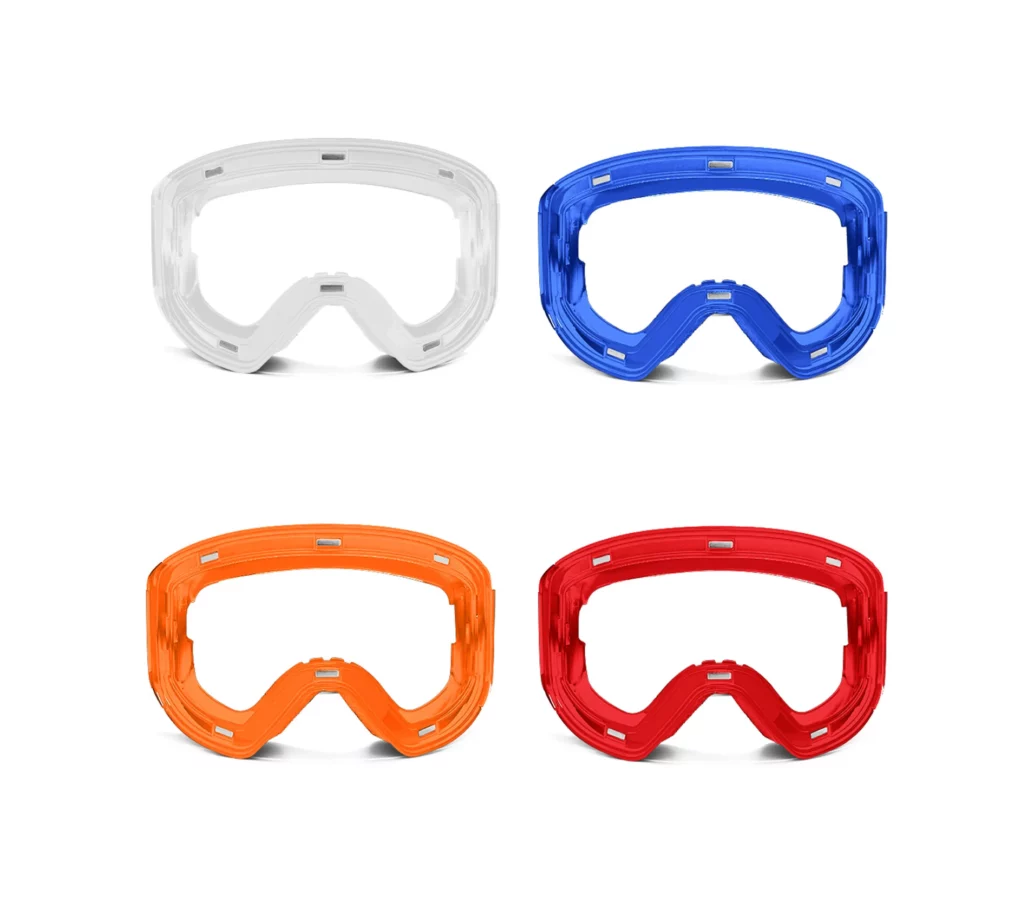
Frame Construction and Materials:
Ski goggles are available in different frame materials, including plastic, thermoplastic polyurethane (TPU), or carbon fiber, each offering advantages in terms of weight, flexibility, and impact resistance.
Opt for lightweight and flexible frame materials for enhanced comfort during long hours on the slopes. Look for frames with foam padding for added cushioning and a snug fit.
Consider impact resistance and durability when choosing frame construction. Goggles with a sturdy frame design and reinforced hinges will withstand the rigors of skiing and protect against potential accidents.
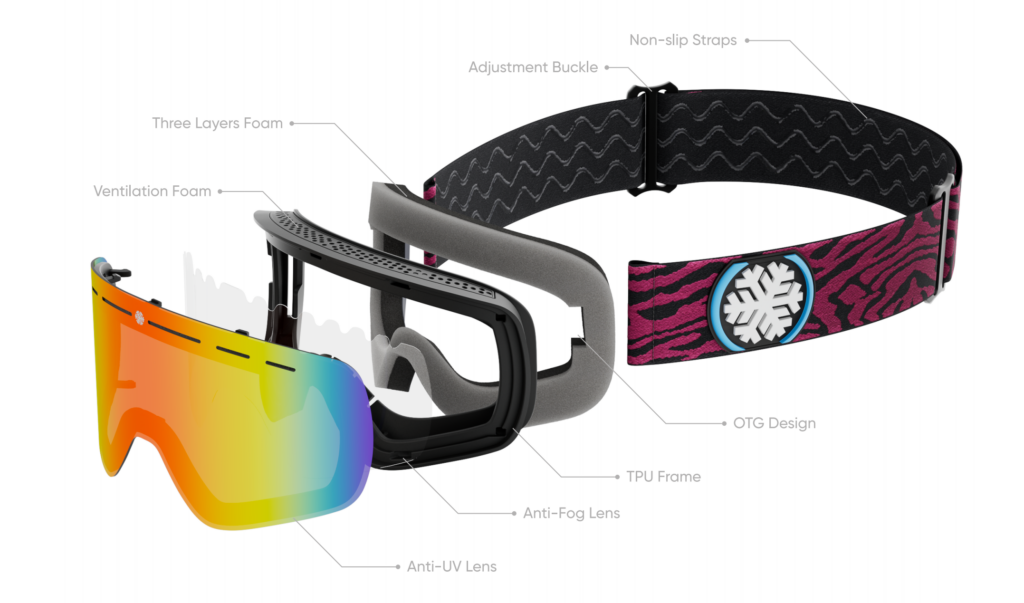
Ventilation and Airflow:
Proper ventilation is essential to prevent fogging caused by trapped moisture. Look for ski goggles with effective venting systems, such as strategically placed vents or channels, to promote airflow and minimize fogging.
Ski goggles with adjustable ventilation options allow personalized airflow control, enabling skiers to adapt to varying weather conditions and exertion levels.
Adjust vents and straps for personalized airflow control and a comfortable fit that supports optimal airflow while maintaining stability.

Strap Design and Compatibility:
Wide straps are essential for stability and ensuring a secure fit. Look for goggles with adjustable straps that can be tightened or loosened as needed for maximum comfort and stability.
Consider the strap length and compatibility with different helmet sizes to ensure a proper fit between the goggles and helmet system. The strap should be long enough to secure the goggles firmly to the face while accommodating different head sizes.
Verify compatibility between ski goggles and helmet designs and brands to ensure seamless integration and prevent any discomfort or gaps.
Additional Tips for Ski Goggle Selection
Trying on and Testing Ski Goggles:
Trying on ski goggles before purchasing is crucial, as it allows for a proper assessment of the fit, comfort, and field of vision.
Check for even pressure distribution and no gaps between the goggles and the face. Goggles should fit snugly to offer optimal protection and prevent cold air or snow from getting in.
Test the goggles’ field of vision and peripheral view by moving your head and eyes in different directions. Ensure there are no obstructions or distortions that could compromise safety on the slopes.
Taking Care of Your Ski Goggles:
Proper cleaning and maintenance techniques are essential for extending the lifespan of ski goggles. Use a soft, microfiber cloth and lens cleaner to remove dirt and debris without scratching the lens.
Store ski goggles in protective cases to prevent damage and scratches when not in use. Avoid leaving goggles exposed to extreme temperatures or direct sunlight.
Regularly inspect and replace worn-out or damaged parts, such as foam padding or straps, to maintain optimal comfort and safety while skiing.
Reminder: don’t forget to consider between prescription goggles and OTG goggles if you need to wear glasses through skiing.
Conclusion
Finding ski goggles that match your face shape and size is crucial for both style and performance on the slopes. By understanding the characteristics of different face shapes, considering sizing considerations, and taking into account factors such as lens technology, frame construction, ventilation, and strap design, you can select the perfect ski goggles that provide optimal comfort, protection, and style. Hit the slopes with confidence, knowing that you have chosen ski goggles that enhance your overall skiing experience.


